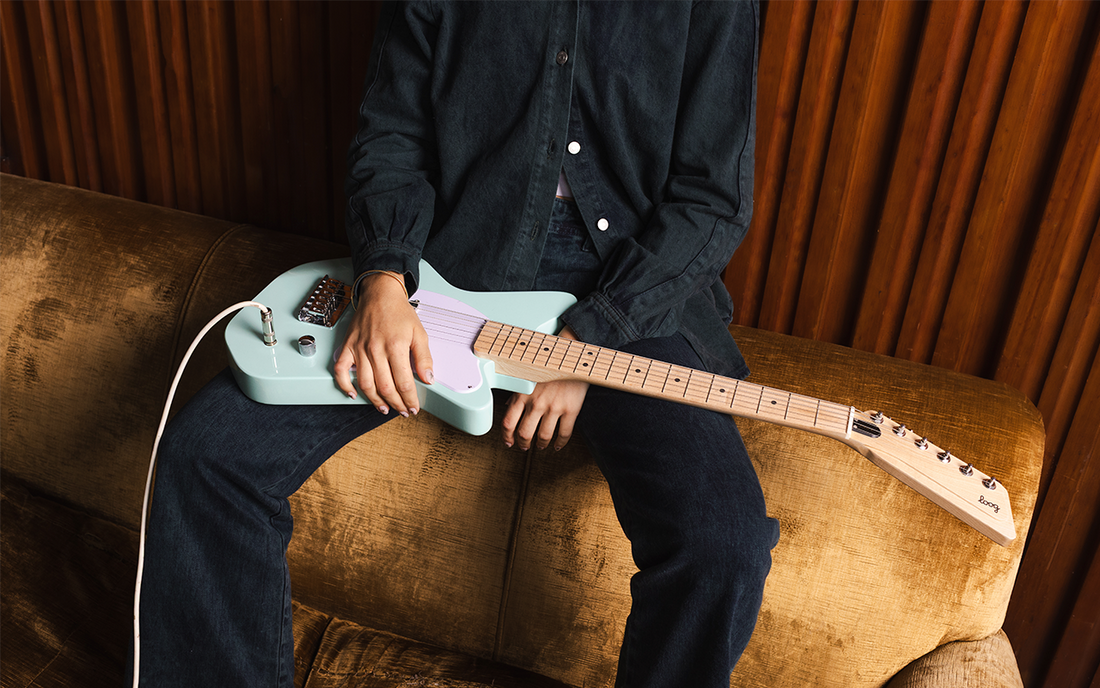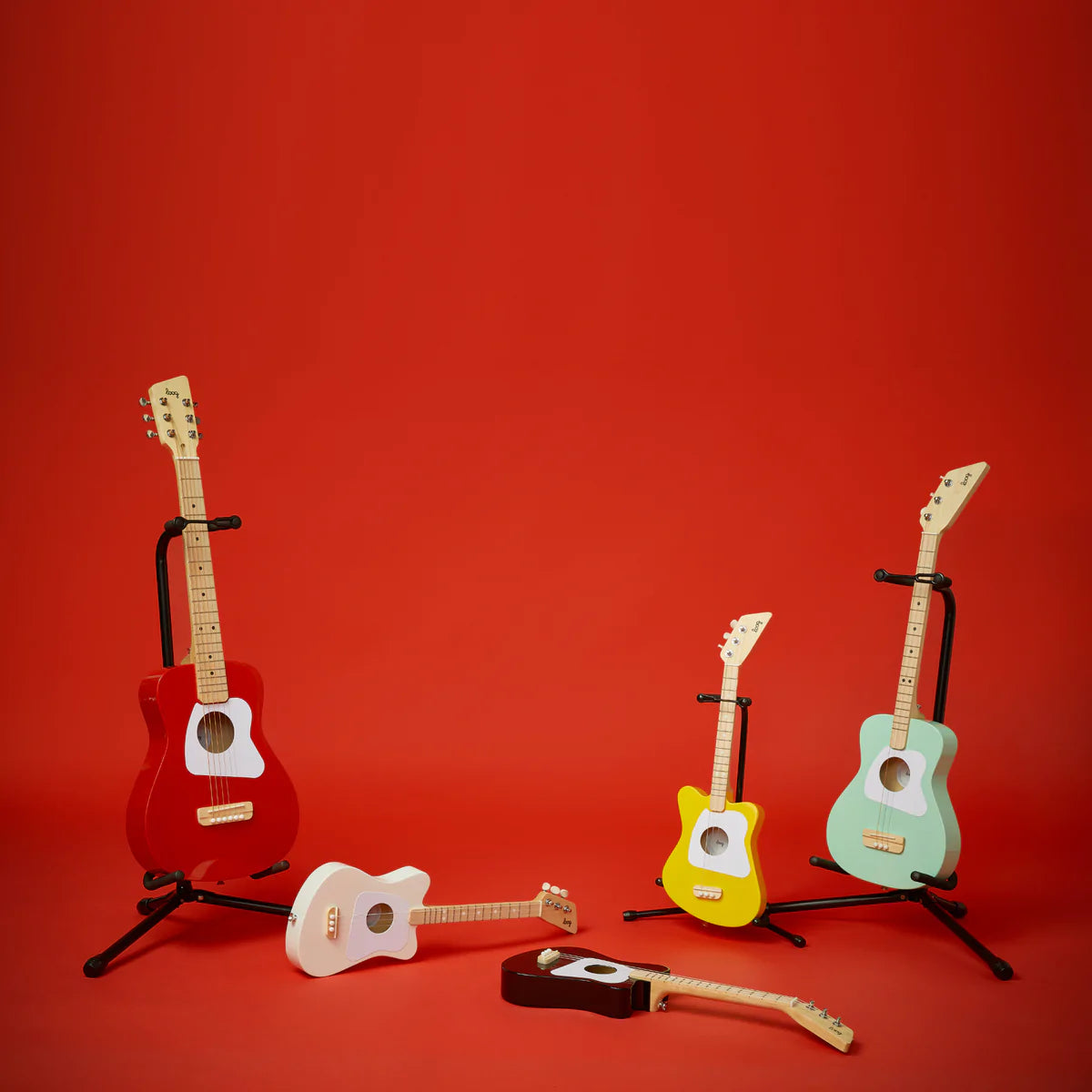
5 Beginner Guitar Tips for Adults Who Are Starting to Learn Music
So, you’ve decided to finally learn guitar as an adult — fantastic choice! Maybe you’ve always imagined playing your favorite songs, or you’re simply looking for a new creative outlet. Either way, it’s never too late to start learning guitar.
Learning guitar as a grown-up comes with its own set of challenges (hello, busy schedules and slightly less flexible fingers!), but it also comes with big advantages like patience, focus, and a love for the music you’re learning.
Here are five beginner-friendly tips to help adults start their guitar journey with confidence and joy.
1. Start With the Right Guitar
One of the most overlooked mistakes beginners make is starting with a guitar that’s too big, too heavy, or simply uncomfortable. A poor fit can make playing feel harder than it should be.
That’s why we designed the Loog Pro 6: a 6-string guitar that’s lightweight, comfortable, and perfectly sized. Even if you’re an adult beginner, it’s easier to handle than a traditional full-size guitar, without compromising on sound.
You can also choose to go acoustic or electric, depending on your preferences. Having the right guitar with a sound you love can make learning feel fun rather than a task.
2. Learn Simple Chords First (and Celebrate Small Wins)
You don’t need to master complicated jazz chords to start making music. Focus on a few beginner-friendly chords — like G, C, D, and Em — and practice switching between them slowly. Even with just these chords, you can play countless songs.
Pro tip: Play along with slowed-down tracks or use a metronome to keep a steady beat. Celebrate the moment you strum your first full song, it’s a huge milestone!
3. Don’t Skip Proper Hand Positioning
Grown-ups sometimes try to “cheat” hand placement to avoid sore fingers, but proper technique will pay off later. Keep your thumb behind the neck (not wrapped over it), and press the strings with your fingertips, not the flat part of your fingers.
It may feel awkward at first, but good technique means cleaner chords, less string buzz, and fewer bad habits to unlearn later.
4. Make Short, Consistent Practice Sessions a Habit
You don’t need marathon practice sessions. In fact, 15–20 minutes of focused practice a few times a week is better than cramming in one long session.
Set a reminder on your phone or leave your guitar out where you’ll see it. Small, regular practice builds muscle memory faster and keeps you motivated.
5. Play Songs You Actually Love
The quickest way to stay excited about learning guitar is to play songs you enjoy. Whether it’s classic rock, pop, indie, or country, search for easy chord versions of your favorite tunes.
If you’re playing on a Loog guitar, check out the Loog app — it’s filled with song tutorials and play-along tracks that make learning even more fun!
Just keep strumming.
Learning guitar as an adult is one of the most rewarding hobbies you can pick up. You’ll challenge your brain, boost creativity, and (most importantly) have a blast making music.
If you’re ready to start, make sure you’re playing on a guitar that feels approachable and fun for you — whether that’s an acoustic or electric guitar. The Loog Pro 6 is designed to make learning easier without sacrificing great tone.
So grab your guitar, start with a few chords, and enjoy the journey. You’ve got this! 🙌

